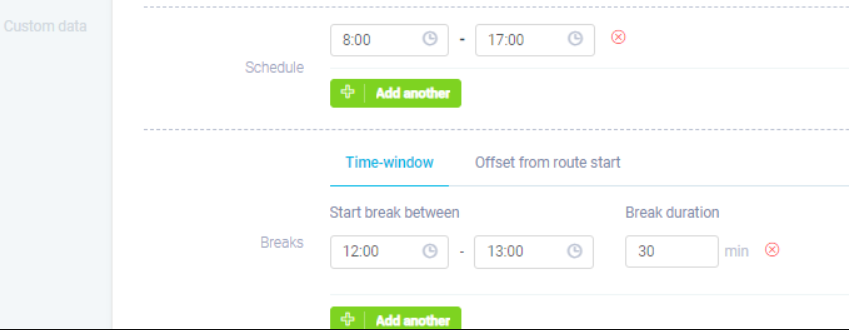Since December 17, 2019, all motor carriers and drivers under the FMCSA's ELD final rule must use an electronic logging device (ELD), unless exempt. Not adhering to this regulation can lead to penalties. The penalties could be citations, lowered CSA scores, and fines reaching up to $26,126 per vehicle.
Navigating through FMCSA regulations, especially regarding short-haul ELD exemptions, can be complex. This article aims to simplify the legal jargon and determine if you qualify for ELD exemption.
In case you don't qualify for an exemption, we'll also discuss the most straightforward, cost-effective, and time-saving method to ensure compliance.
Understanding the Short-Haul Exemption
The short-haul exemption allows some fleet management companies to avoid tracking their drivers' activity with an ELD (electronic logging device). It's granted to certain short-haul carriers based on factors like their distance from the work reporting station.
The FMCSA introduced this exemption because short-haul operations typically involve less concern about overwork and driver safety compared to long-haul trucking.
Short-haul drivers often face more challenges, such as many daily stops, urban traffic, and construction. Thus, being exempt from maintaining active driving records can benefit them.
Criteria for Meeting the Short-Haul Exemption
In this section, we outline the criteria necessary to meet the exemption from ELD regulations for short-haul operations. These criteria apply to all individuals operating commercial motor vehicles (CMVs), including truck drivers, semis, cars, or vans.
First Requirement: Operating Radius within 100 Air Miles from Base
Your drivers must stick to routes that keep them within a 100 air-mile radius of their reporting station. It's often referred to as the 100-air-mile exemption.
Your business can cover a larger area if you have multiple depots. Yet, individual drivers must not exceed the 100 air-mile radius.
Exemption for Non-CDL Vehicles: Delivery operations utilizing non-CDL vehicles (such as parcel delivery, NEMT, or specific shuttle services) can operate within a 150-air mile radius and still qualify for exemption.
Off-Duty Within 12 Hours
Your drivers cannot drive for more than 11 consecutive hours during their shifts. Within 12 hours of starting, they must return to the reporting location and officially end their shift.
From that point on, they must be completely off-duty, without performing any maintenance or working in any other capacity as a driver.
Second Requirement: Start and End at the Same Location
Your drivers must start and finish their hauls at the same location. In other words, the short-haul exemption does not apply to cross-country long-haul commercial drivers.
Third Requirement: Maintaining Driving Records
To qualify for the ELD exemption, your company must maintain accurate records of drivers' working hours. These records should include:
- The time each driver begins duty daily
- Total hours on duty per day for each driver
- Time each driver ends duty daily
- Total driving time over the previous 7 days for each driver
These records must show compliance with hours of service regulations (HOS) and must be retained for at least six months.
Note: These time cards differ from RODS (Record of Duty Status), as only the carrier or company handles keeping them. Individual drivers are not obligated to keep digital or paper logs of their duty time under the short-haul exemption.
Not Eligible? Here's What to Do
If you don't currently qualify for the short-haul exemption, there are steps you can take to become eligible if you operate a short-haul delivery or passenger business.
Step 1: Install ELDs on Your Vehicles
Install ELDs on your vehicles, or keep them if already installed, until you meet all the criteria for exemption. Failure to do so could result in citations and large fines.
In the meantime, you can also use ELD mobile apps for your drivers. These apps are easy, cost-effective to install, and fully compliant.
Step 2: Adjust Short-Haul Routes
If your drivers fulfill all requirements except staying within a 100-mile radius, you can achieve compliance by reorganizing your routes.
For instance, if you have multiple offices or depots, you can redistribute orders and service areas among drivers. That helps to ensure everyone remains within the 100-mile radius.
Step 3: Manage Workloads to Meet Shift Needs
If your drivers fulfill all requirements except for working hours, you can use a route planner such as eLogii to balance workloads.
eLogii enables you to generate precise schedules and routes automatically. It will help you ensure no driver exceeds the 11-hour maximum.
Unlock Extra Benefits with eLogii: Boost Productivity, Cut Expenses, and Expand Your Business
eLogii offers scheduling and routing, with the ability to select and customize the duration of the break.

It serves as an ideal complement to an ELD solution or as the preferred option for those exempt but seeking enhanced fleet management.
While ELDs primarily uncover issues post-operation, eLogii proactively minimizes compliance concerns during the planning phase.
However, our services extend far beyond mere compliance.
eLogii empowers businesses like yours to optimize fleet productivity through intelligent route optimization, live vehicle tracking, accurate ETAs, driver schedule optimization, and a host of other invaluable features.
Simply import your order list in bulk, and eLogii's planner will consider all real-world constraints. These constraints could be delivery time windows, driver service areas, and vehicle capacities. This saves time during planning, while optimized routes help conserve fuel, cut driver costs, reduce overtime, and enhance fleet productivity.
Explore our case studies for real-world examples of how businesses like yours have leveraged eLogii's software to enhance their operations.